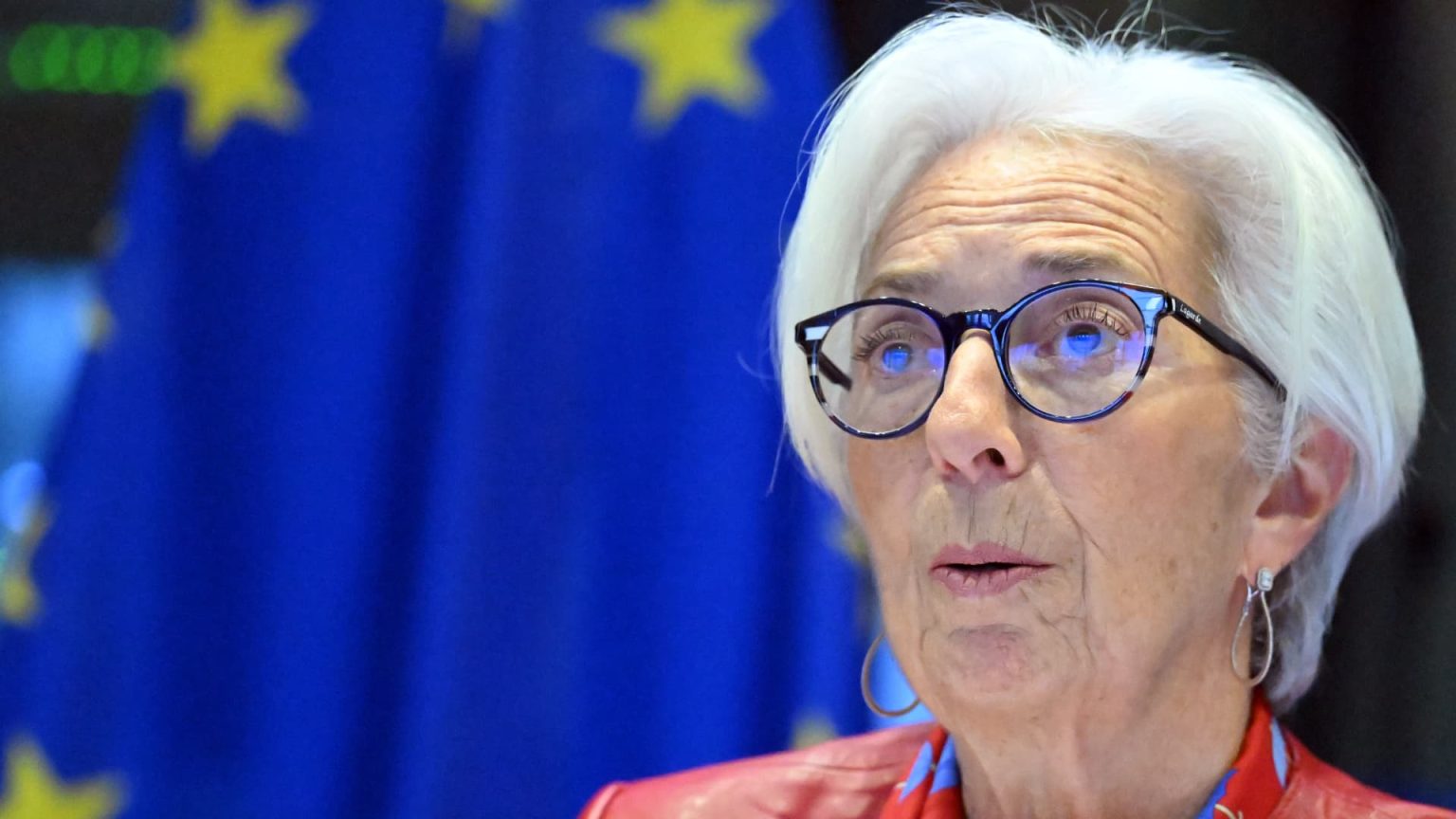The European Central Bank on Thursday held interest rates steady for the second meeting in a row, as it revised its growth forecasts lower and announced plans to shrink its balance sheet.
The bank was widely expected to leave policy unchanged in light of the sharp fall in euro zone inflation, as investors instead chase signals on when the first rate cut may come and assess the ECB’s plans to shrink its balance sheet.
“The Governing Council’s future decisions will ensure that its policy rates will be set at sufficiently restrictive levels for as long as necessary,” it said in a statement.
The latest staff macroeconomic projections see average real GDP expanding 0.6% in 2023, from a prior forecast of 0.7%. They estimate GDP will expand by 0.8% in 2024, from 1%, previously. The forecast for 2025 was unchanged, at 1.5%.
Headline inflation is meanwhile seen averaging 5.4% in 2023, 2.7% in 2024 and 2.1% in 2025. It had previously forecast readings of 5.6% this year, 3.2% in 2024 and 2.1% in 2025. The ECB now also released a new estimate for 2026, at 1.9%.
The decision keeps the central bank’s key rate at a record high of 4%.
The ECB announced reinvestments under its pandemic emergency purchase programme (PEPP), a temporary asset purchase scheme, would complete at the end of 2024.
The transition will be gradual, with a reduction in the PEPP portfolio by 7.5 billion euros ($8.19 billion) per month on average over the second half of 2024, it said, as the Governing Council ageed to “advance the normalisation of the Eurosystem’s balance sheet.”
“I think most people thought the announcement on PEPP would come a little bit later,” James Smith, developed market economist at ING, told CNBC after the announcement. “That it might come in the rate hike discussion, and that was the price that the doves would have to pay.”
Fall in inflation
Euro zone year-on-year inflation has moderated from 10.6% in October 2022 to 2.4% in the most recent reading in November. That has put the ECB’s 2% target within grasp, even as officials note the threat that wage pressures and energy market volatility will cause a potential resurgence.
It has also fueled bets on cuts next year, with some analysts and market pricing both suggesting trims could come before the summer. ECB President Christine Lagarde has so far insisted it is too early to think about cuts, saying that key data sets on wages need to be monitored early next year.
European bourses gained ground through Thursday morning, with the regional Stoxx 600 index reaching its highest level since January 2022, while European bonds rallied.
The moves partly reflected the U.S. Federal Reserve’s Wednesday decision to hold rates steady and release the latest “dot plot” rate trajectory from its members, triggering expectations of a dovish pivot from major central banks.
Gains held after the Bank of England also announced a rate hold at midday U.K. time, even as its committee said monetary policy was “likely to need to be restrictive for an extended period of time.”
Read the full article here




